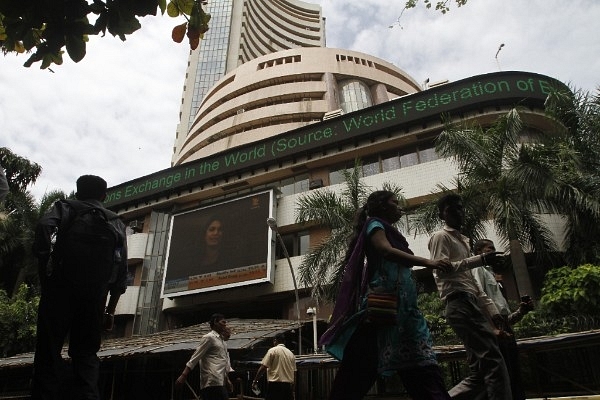
Why India Should Be Rooting For Trump In His Efforts To Weaken The US Dollar
It makes sense for India and net importers to back the Trump efforts to keep the dollar cheaper since this will ease their own current account deficits and help contain inflation.
India, and other countries battered by a strong dollar, should be batting on the side of US President Donald Trump when he criticises the US Fed for raising interest rates too soon.
Spooked by worries about inflation and unusually low unemployment levels, the Fed under Trump appointee Jerome Powell has raised rates twice this year, and though it held back this month, the forecasts include at least two more hikes in 2018, and even more next year.
Thanks to these hikes, and also the strength of the US economy, the dollar has never been stronger. The Indian rupee, among others, has been at the receiving end of this strength, sliding to 70 to the dollar. The Reserve Bank of India is having a tough time slowing its descent, having expended nearly $24 billion since March to prop the rupee.
The problem for Donald Trump, who is waging a trade war with China and some other countries, is that if the war intensifies, the US economy could slide into another recession. And if the dollar stays strong, even with higher tariffs may not deter imports, making Trump’s trade war rhetoric costly for the US economy.
This is why Trump was critical of the Fed’s decision to raise rates, which ends up strengthening the currency. A Reuters report quotes Trump as saying, “I’m not thrilled with his (Powell’s) raising of interest rates, no. I’m not thrilled.” And he made it plain why he thought so: his trade war. “We’re negotiating very powerfully and strongly with other nations. We’re going to win. But during this period of time I should be given some help by the Fed.”
While it is unlikely that the Fed will buckle under presidential pressure, it makes sense for India and net importers to back the Trump efforts to keep the dollar cheaper since this will ease their own current account deficits and help contain inflation.
The reasons are simple: the dollar’s strength matters for India because it is the currency in which most of our imports and exports are invoiced. Globally more imports than exports are invoiced in dollars, though the dollar dominates invoicing on both sides of trade.
According to recent data, dollar-invoiced exports are 3.1 times the dollar’s underlying share in exports; in the case of imports, the multiple is 4.7 times. Moreover, the dollar is also the main external reserve held by most countries.
The downside of a weak dollar is that our foreign exchange reserves will have a lower rupee value, but this will be balanced by a reduction in the value of our dollar-denominated external debt. As against around $ 400 billion in reserves, our external debt was much higher, at $529 billion, as at the end of March 2018.
Our export sector will lose some earnings, but our oil-dependent economy will gain more. We are probably marginally better off with a cheaper dollar.
More important, from a longer-term perspective, the world needs to lower its dependence on one currency for its trade and reserves. Currently, the dollar constitutes nearly 62 per cent of the world’s official reserves, while the euro has around 20 per cent, sterling and yen 4.68 per cent and 4.81 per cent, and the Chinese yuan 1.39 per cent.
Clearly, the Chinese yuan’s role needs to grow and the dollar’s shrink, so that the lopsided dependence on the dollar for trade invoicing ends.
This cannot happen if the dollar stays strong forever, and remains the world’s sole safe haven currency.
India should support Trump in his efforts to weaken the dollar.